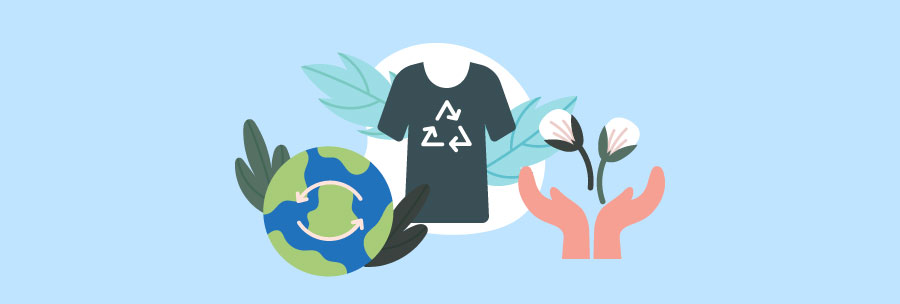
Fashion’s challenge, becoming a circular industry
Textile players must transform their production to reduce their environmental impact and encourage more responsible consumption.
The textile industry is facing a major paradigm shift: changing its linear production to circular production. In other words, the produce-buy-use-dispose equation, which is the prevailing one in the apparel manufacturing process, is being transformed into a produce-buy-use-reuse cycle.
The textile industry has traditionally been a polluting and resource-wasteful industry, and now the sector’s efforts are focused on reversing this situation to adapt to the sustainability challenges set out in the 2030 Agenda and the European Green Pact.
With the traditional concept of renewing the wardrobe in two seasons, spring-summer and autumn-winter, we have moved on to fast fashion: shops replenish their textile offers at least once a week and at much more affordable prices. This immediacy and lowering of prices lead to clothes quickly becoming obsolete and the accumulation of more clothes that will be put to little or no use. Not to mention the unsustainability of its production cycle, which according to this European Parliament report, is responsible for the contamination of 20% of drinking water, because of dyes and finishing products.
Another alarming fact is that the fashion industry is responsible for 10% of global carbon emissions, which is more than shipping and international flights combined. In addition, the European Environment Agency estimates that textile purchases generate more than 650 kg of CO2 emissions per person, with significant environmental impact.
The challenge, achieving circularity
For these and other reasons, in 2021, the European Union adopted the ‘Action Plan for the Circular Economy,’ in a clear commitment to the philosophy of circularity and the elimination of planned obsolescence (when companies create products with defects, designed to wear out earlier so that new ones must be consumed).
According to this Action Plan, the circular economy is a model of production and consumption that involves sharing, renting, reusing, repairing, renewing and recycling existing materials and products as often as possible to create added value. This increases their life cycle and reduces waste, since the materials can be used again in a productive way.
This commitment to circularity has finally reached the textile world and the European Union is promoting, among others, several projects related to the sustainability of the textile industry.
Fashion for Change
For three years, until December 2023, this project combines international events, mentoring, networking and knowledge about materials for those involved in the fashion industry. It also has an Accelerator programme aimed at SMEs, start-ups and designers to help them in their conversion to a circular production model.
Circular InnoBooster
With a budget of 1.12 million euros, this project seeks to use circularity in its broadest sense, based on regenerative business design principles, human process designs and community participation models. It also presents a cross-border perspective, assisting companies in knowledge transfer between regions.
SmallButPerfect
For 30 months, this project will develop a network of actors in the fashion industry who can exchange knowledge and best practices to promote wider systemic change in the SME fashion sector. In June and October 2022, it will launch calls for an accelerator programme of mentoring, funding and cross-border networking.

